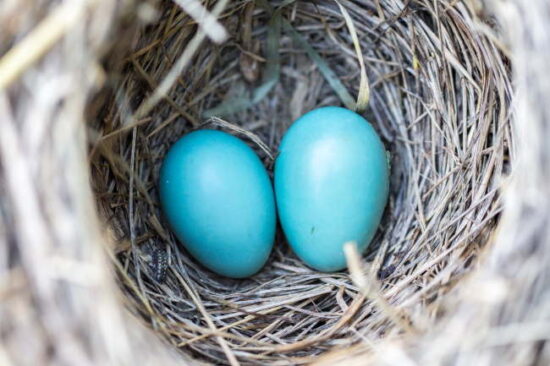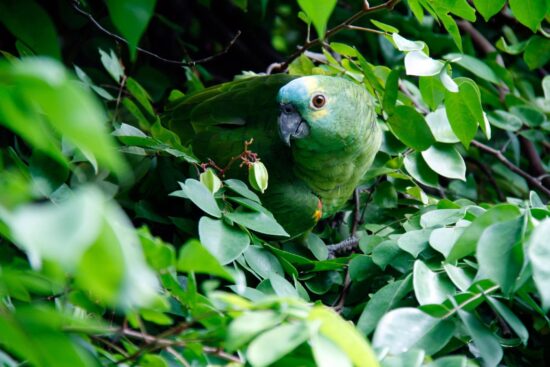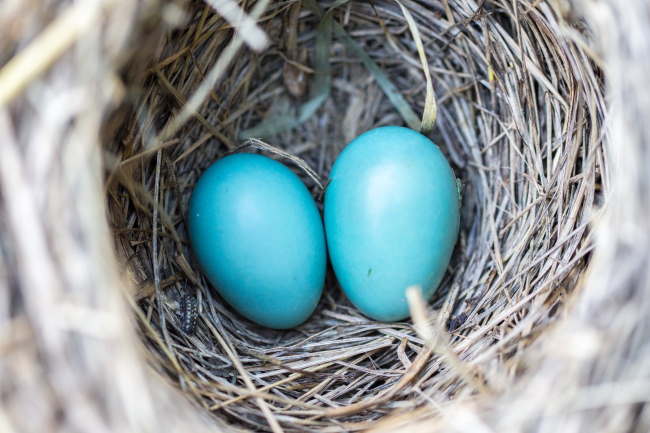Have you ever asked, “What colors are bird eggs, and what do they mean?”
Like the birds themselves, bird eggs come in different colors – white, gray, beige, brown, and blue, to name a few. Patterns may also vary – some eggs are plain, while others have speckles and spots.
Now…
Egg pigmentation is a surprisingly complex process. There isn’t even any solid piece of evidence that explains why an egg looks a certain way.
However, there are some speculations. We’re here to discuss some of the well-known theories behind the colors of bird eggs.

Warmth
According to a 2019 study from Nature Ecology and Evolution, bird eggs tend to be darker and browner in places with cold climates. The dark color is better at absorbing heat from sunlight, which helps developing chicks stay warm while their parents search for food.
For the same reason, bird eggs also become darker when nests are built on the open ground rather than inside a cavity.
In contrast, eggs tend to be lighter and slightly bluer in places near the equator. Many birds lay blue eggs in these regions because this color absorbs the right amount of heat without getting so hot that the eggs cook.
However, egg colors may still vary in the tropics, which we’ll discuss next.
Protection

In nature, camouflage is a disguise where a creature blends in with the surroundings. Predators use this to catch prey off-guard, while prey animals camouflage to hide from predators. Bird eggs are no exception.
Darker colors with many patterns are more challenging for predators to see. In contrast, white or blue-colored eggs are easier to spot.
Meanwhile, the eggs of ground-nesting birds tend to have a speckled pattern to blend in with the soil and rocks around them.
Birds that lack patterns and dark colors in their eggs, like pigeons and ducks, cover their eggs instead. They use different surrounding debris, such as stones and twigs.
Another point is that darker eggshells are a little stronger. During the production of an egg, the female bird deposits pigments in areas where the egg is more likely to thin or break.
Deeper pigments also have anti-bacterial properties that prevent them from infections. This is why bird eggs can also be dark in hot and humid areas. Even though there is plenty of warmth, these places have higher risks of diseases and predation.
Identification
Various colors and patterns in an egg help a parent recognize their egg and return to the correct nest. Think of it as a sign saying, “This egg is mine!”
Identification is particularly crucial as some bird species, such as the Cuckoo Finch, are brood parasites. These parasites lay their eggs in another nest to manipulate other parents into raising their young.
The trickery happens due to egg mimicry, where the brood parasite’s egg looks similar to another bird’s egg.
Brood parasitism provokes an evolutionary arms race between the parasite and the host, where two species constantly adapt to counter each other. In this case, the parasite’s eggs evolve to look more like the host’s, whereas the host’s eggs evolve to look less like the parasite’s.
Conclusion
As you can see, bird eggs are believed to appear in particular ways to survive. They constantly develop in response to different circumstances.
After all, nature is all about “survival of the fittest.” Those who can best adjust to their environment are most successful in surviving.
With this, we should never disturb bird nests in the wild. Birds already have to defend their eggs in natural conditions, so they’ll only have a more challenging time with human intervention.


Leave a Reply